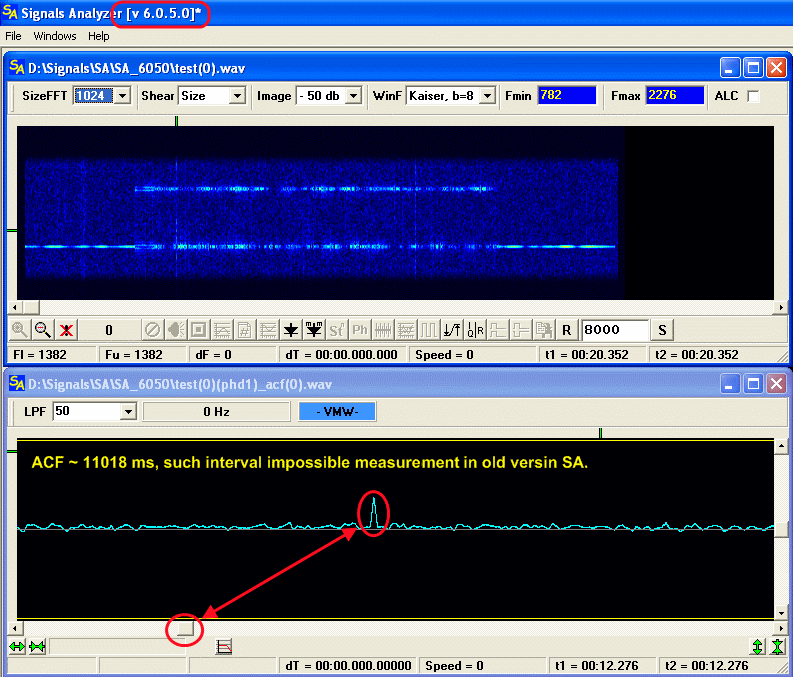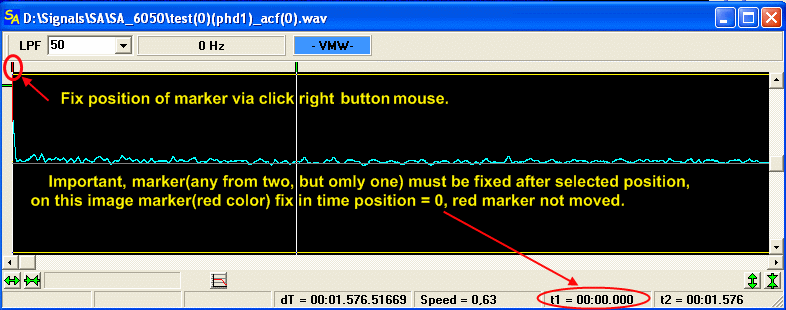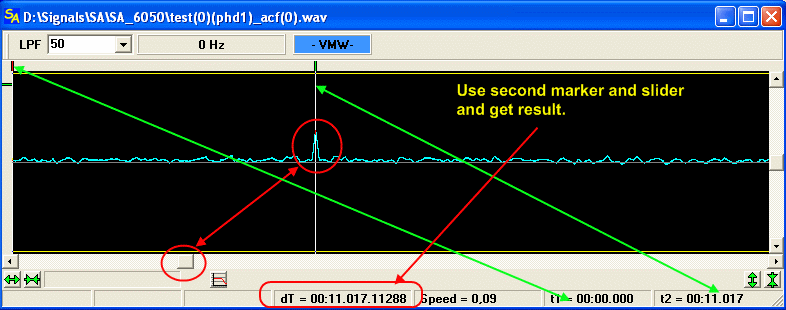|
|
| Разместил (Author): |
SergUA6  |
| Авторские права |
© http://www.radioscanner.ru |
|
|
Текст
|
SA update version 6.0.4.9 to 6.0.5.0
The American colleagues have detected the problem of measurement of long durations intervals of ACF, however it is not only about ACF, but also about any long of time interval in WF. If the measured time segment, was not shown fully in the window, it was extremely difficult to detect the true measure of its duration or even impossible. The ability to measure with sufficient accuracy any durations in WF module is realised in version 6.0.5.0, the extremely bad bug connected with program lag which was caused by call of VMW is fixed. One beta-tester has perfectly described the situation when it occurs, for what I thank him very much. Also some changes and improvements were added in algorithms and code.
Typical situation for many people: ACF is about 11018ms, peak of ACF is far behind limits of displaying window

How to measure the time of occurrence of peak? Through the binding to the one of the markers or to the peak, or else to the beginning of ACF graphic. The mechanism is universal and the differences are not present. The marker binding, to concrete position on the grapic, is caused by the right button click of the mouse on the marker, on its green part, thus the marker becomes red and it cannot be moved. It is possible to fix any marker, any, but only one, the second remains free for measurements.

We are fixing the maker by having shifted the graphic to beginning and having moved there one of the makers, after we are shifting peak into displaying window by the slider, and use second maker for measurements. Eevryhing is simple enough and logical. Fixing is removed from the maker by repeated the right click of mouse button on the already red segment of the marker.

The mechanism is universal enough and allows to measure almost any intervals of time. The common approach is described, accuracy of measurements strongly depends of scale. If exact measurements are necessary, then it is necessary to increase the scale, for instance, in this example the peak is not such "sharp", it is really it is smeared(spread) within 3-4 ms, and it does look "sharp" only because there is about 10-15 ms in one pixel on the picture.
Good Luck!
|
|
|
|
Добавлять комментарии могут только зарегистрированные, активировавшие регистрацию и не ограниченные в доступе участники сайта!
|
| Файл создан: 29 May 2009 13:09, посл. исправление: 29 May 2009 13:18 |
|

